The data-driven guide to pricing influencers on Instagram
How much do influencers really cost? 🧐
Paying influencers can vary depending on a whole lot of factors, like their performance and your expectations. And influencer prices aren’t exactly… public information.
Which makes it extremely hard to figure out what you should be paying influencers. So how do you figure out the right prices?
Scroll on to find our data-driven pricing methodology we’ve used to successfully price thousands of collaborations – so you can price influencers confidently!

Use this menu to navigate around the page 👇
A target CPM approach for pricing
| Justifying pricing to your team or clients | Finding a reliable CPM range per industry | Putting a target CPM approach into practice
Pricing influencers on Instagram 💸
Pricing influencers. Maybe this makes up a part of your daily work. Maybe it’s something you need to understand for budgeting. Or maybe you’re just interested in it and want to learn more.
Whatever the reason, pricing influencers is one of the most important and challenging parts of influencer marketing. If you don’t have a clear pricing strategy, you’re likely pricing influencers based on “a gut feeling.”
That means you’re spending your marketing budget without knowing how it’ll affect your campaign results. You’re also more likely to overpay influencers for their work.
Then what do you do?
You might do a quick search on Google. You’ll scroll past plenty of resources about the topic. But what you’ll end up finding are endless lists and charts of average influencer prices. They’re likely split by follower sizes and channels. And they often have little to no explanation about the strategy behind those numbers, or how you’re actually supposed to use them.
So then you’re back to square one. You feel stuck on where to even start with pricing. You feel insecure about the prices you do come up with. You feel unsure about how you’ll justify the prices you pay to your team or clients.
This guide is a detailed, reliable resource you can use to price influencers on Instagram. It’ll introduce the pricing approach we’ve used for thousands of collaborations. You’ll learn how to use it in practice – so you’ll walk away feeling confident pricing influencers.
Let’s get to it!
A target CPM approach to justify your influencer pricing 👨🏫
If you work with marketing, you’re likely already familiar with the formula for calculating CPM. Written as an equation, it looks like this:

A target CPM approach to pricing influencers uses this same equation, but it looks like this:
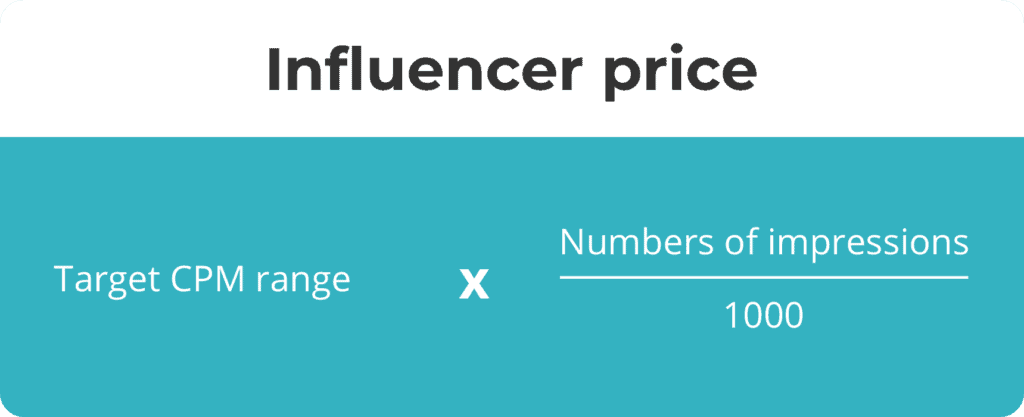
The number of impressions is straight-forward — it’s an influencer’s average number of impressions per post.
The target CPM range is the CPM range you want to pay an influencer for your campaign. Unlike digital ads, where the CPM is your result, you use a target CPM range as a starting point. Then you work back to a price!
But why is it a range?
It’s because different influencers can have specific attributes that make them more valuable to your campaign. Or your campaign can have certain demands of influencers, which leads to more expensive collaborations. You can see different types of attributes and campaign demands below.
Because the target CPM is a range, it has a minimum and a maximum. And when you put a target CPM range into the equation, the resulting price will be a range as well. So, you end up with these equations:


Your influencer’s price on a single post will be somewhere between the minimum influencer price and the maximum influencer price.
If your head is whirling from this information, stay with us! Further below, you’ll see exactly how to find a target CPM range, and how to use it to effectively price influencers.
But first, let’s dive into why you should use this approach to price influencers.
Why should you use a target CPM approach?
First, the target CPM approach calculates influencer fees based on performance. To be more specific — impressions. All impression data on inzpire.me comes directly from Instagram. With first-party data, and our approach, you no longer need to guess influencer prices!
The differences between first- and third-party data 
First-party data is data that’s collected directly from the source where it’s created. In this case, Instagram. That means the influencers’ actual performance data is used, making it accurate and reliable.
Third-party data: Data that’s collected by outside sources. They have no direct connection to the influencers. The data is usually either estimated or put together using third-party Instagram scraping tools, which can be inaccurate and unreliable.
Second, you may not understand how influencer rates are usually calculated. They’re often hidden or unclear.
With this approach, these calculations will become more transparent. You’ll be able to price influencers consistently. When you know exactly how to calculate your costs, it’s easier to show budget holders, teams, and clients how you’re spending your campaign budget.
But what exactly do you get when you pay influencers using this approach?
Justifying your influencer marketing costs
If you’ve worked with influencers before, you’ve probably compared the CPM of influencer marketing to other digital activities. For example, programmatic, display, and Facebook, Instagram, or YouTube ads. And you’ve probably found that collaborating with influencers can be quite expensive.
If you’re new to influencer marketing, it’s true. The CPM of an influencer marketing campaign is generally a lot higher than its digital counterparts.
So you’re left wondering: Why is influencer marketing CPM so much higher? Why is it worth doing if other channels are so much cheaper?
The short answer is — you get more when you buy influencer marketing!
Influencer marketing covers more costs
When you’re running a marketing campaign, you typically get a budget with two categories: working and non-working spend. Your working spend is used on media placement. While your non-working spend is used on creatives and agency fees.
The average CPM of digital marketing only takes working spend into account. But the average CPM of influencer marketing takes both non-working and working spend into account.
Comparing digital and influencer marketing costs with an example
Let’s consider a digital ad campaign on Instagram.
Before you launch your campaign, you need some ad creatives. So you work on producing them. Then you need to edit them professionally so they stand out. You’ll also want to present them in such a way that it tells your story.
You either need an in-house team, a freelancer, or an agency to make your ad creatives. This can make the process quite costly. These costs aren’t included in your digital ad campaign CPM… but they are in influencer marketing.
Once you get your creatives in place, you’re ready to launch your campaign. You can choose how you want to optimize your campaign based on your objective.
For instance, you might want to optimize for conversions. You’ll set a budget to bid against competitors for placements on your target audience’s Instagram feed. The impressions you win and the price you pay for them determines your campaign’s CPM.
Because of the bidding structure, you can’t predict what your CPM will be with digital marketing.
With influencer marketing, you’re not directly bidding against competitors for visibility.
You’re offering competitive prices to influencers who have the right audience and who would be a good fit for your campaign. The influencers who want to work with you create the content for you, in line with what you ask of them.
So, unlike digital marketing, you have control over the CPM you pay when you work with influencers.
Influencer marketing offers more value for content
With influencer marketing, you’re also paying for the added benefits of credibility and product placement in organic content.
A survey we did of 900 Instagram users revealed:
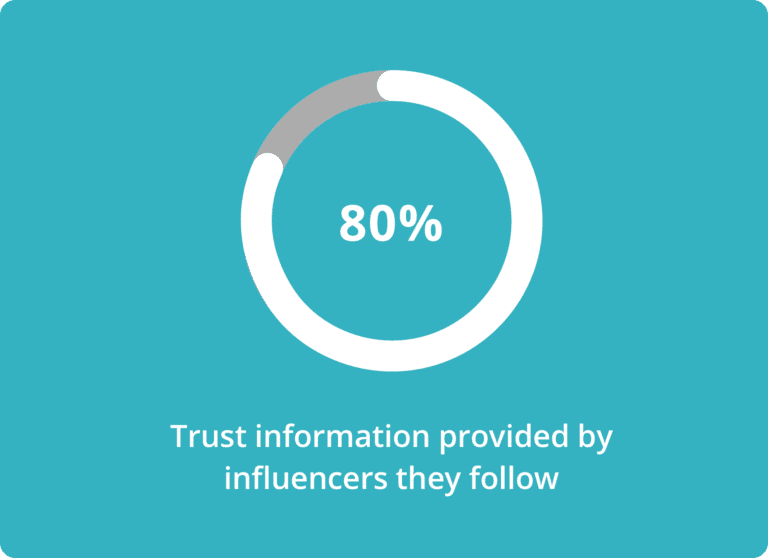
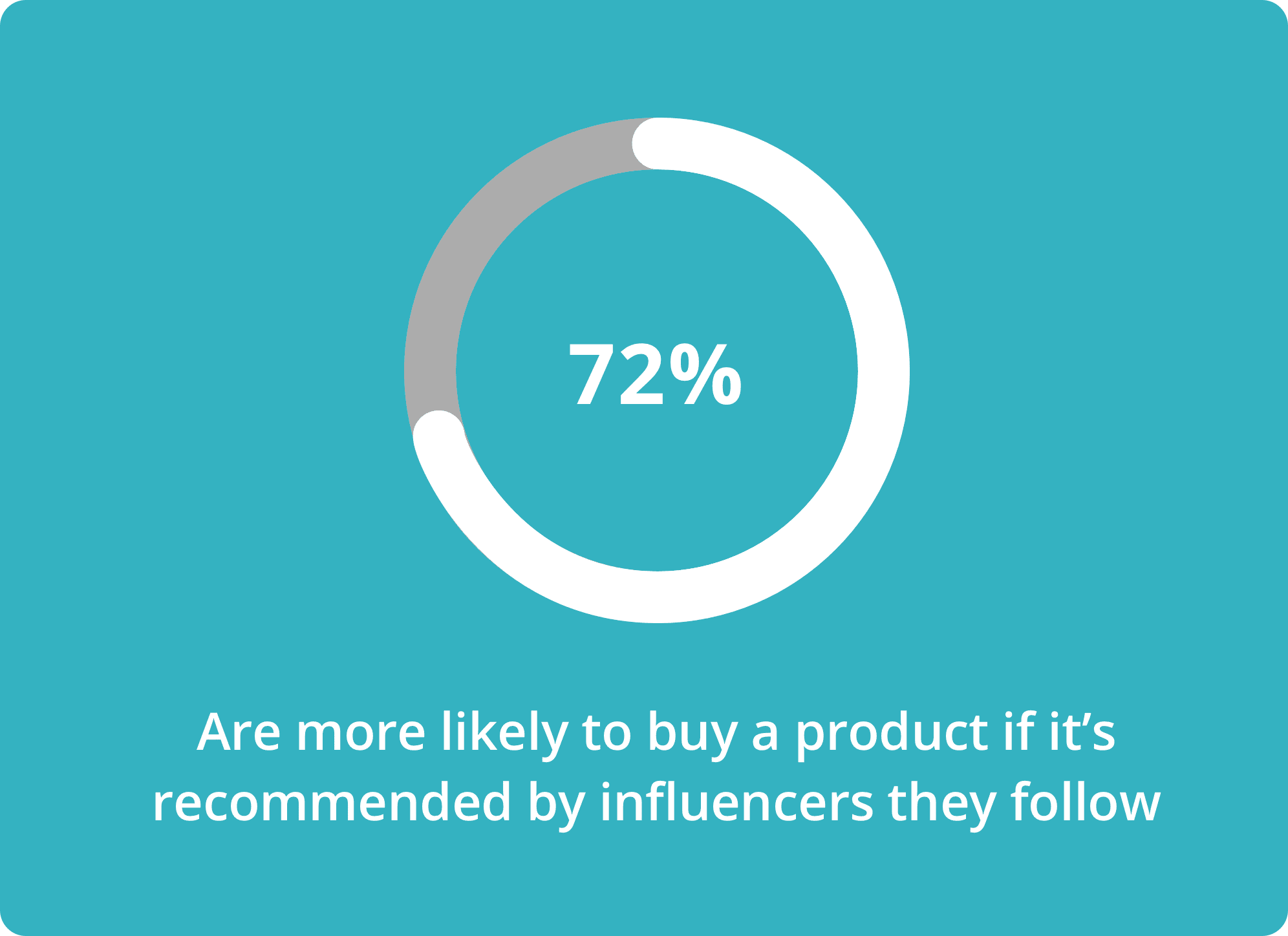
When influencers post content for you, you integrate your marketing into a real person’s life. And because influencers also have a relationship with their audience, it leads to higher active ad consumption.
Comparing the costs of digital marketing to influencer marketing is like comparing apples-to-oranges.
You don’t see the full value of influencer marketing if you compare them!
Now you know more about the target CPM approach and how you can use it to justify your influencer marketing costs. The question you might be asking is: what’s a reliable target CPM range?
In the following section, you’ll learn how you can find the right target CPM range to price your influencers.
Finding a reliable target CPM range for your campaign 🔎
In recent years, the average CPM for a collaboration on the inzpire.me platform has been between €25 and €30.
Remember, influencer marketing includes the cost of media and distribution. This range is a good reference point for your influencer marketing on Instagram. But there are other factors that can affect CPM.
With influencer marketing, the CPM can fluctuate depending on:
- What industry you’re in
- The type of influencers you work with, and
- The demands of your campaign
By adjusting for these factors, you’ll price your influencers more accurately!
Choosing a starting range based on your product’s industry
Start with a target CPM range from the Industry CPM table below.
We calculated these ranges based on thousands of bookings that took place on inzpire.me. The bookings were completed between 2020 and 2021.
So how do the target CPM ranges below work?
The CPM range you land on depends on your product! Choose the industry group that fits the product you want to promote in the campaign.
For example, let’s say you’re an outdoor retailer who wants influencers to promote jackets. Then you should use the CPM range linked to the Fashion & Clothing industry.
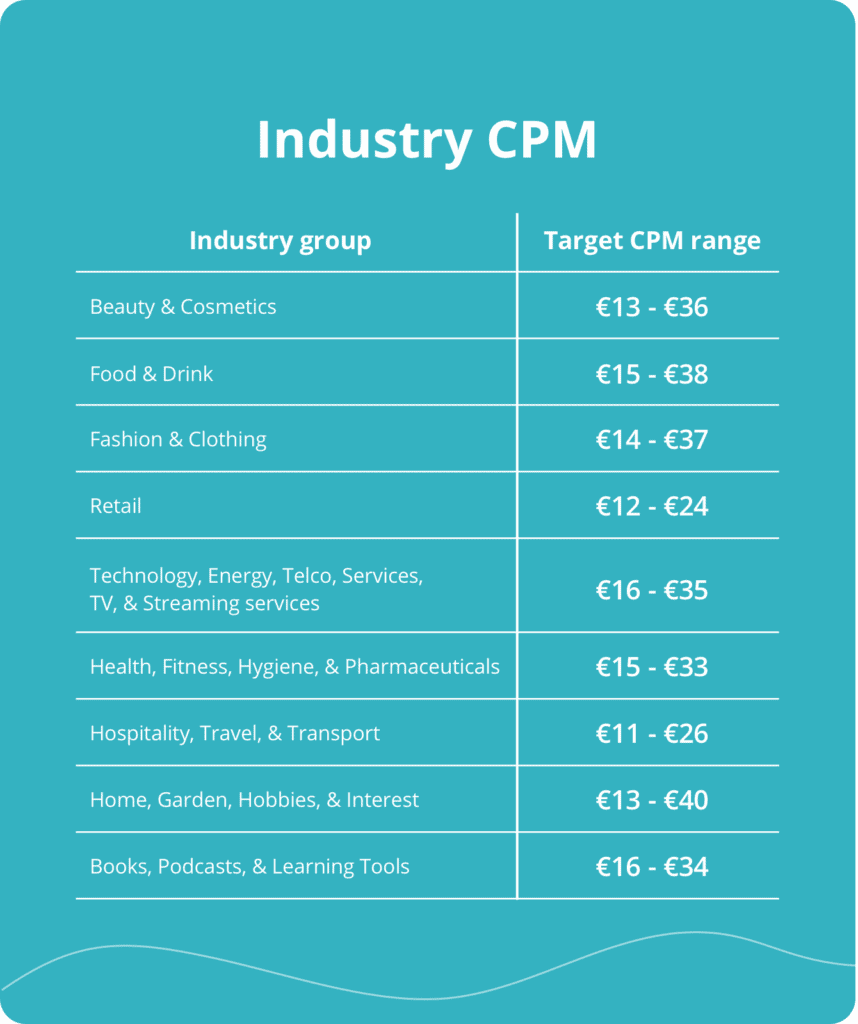
The target CPM ranges in the table include influencers who: belong to an agency, work for themselves, have a large following, and have smaller following.
Adjusting your target CPM range for your campaign goal
Influencers are generally paid more when they have certain attributes that can help you achieve a goal. Or when your campaign has specific demands of them.
Below, you’ll find a list of attributes and demands to keep in mind when pricing influencers!
Does the influencer you want to work with or your campaign check off a few boxes in the list below? If so, you should consider pricing higher up in your target CPM range.

Attributes your influencer might add to your campaign
The influencer has a relevant audience
You want to work with influencers that have a relevant audience for your campaign. Your campaign will be more effective if the influencers’ followers are in your target location, age range, or gender.
The influencer belongs to a talent agency
Managed influencers tend to cost more than independent influencers. That’s because talent agencies do their due diligence with the influencers in their portfolio. They only manage the ones they believe are most effective.
The influencer has a high level of influence
Influencers who have strong relationships with their followers are good for conversions. This is because their audience trusts them. So they’re more likely to buy a product they recommend. For instance, celebrities are influential because they’re well-known. People tend to be more receptive to their opinions.
The influencer is a good brand fit
You want to work with relevant Influencers. They’ll create content that resonates with their followers. That’s because people follow influencers who have similar interests to them. Your campaign will also be more authentic and credible.
The influencer creates high-quality content
This is especially important if your goal is content creation. You may want to reuse the influencers’ content in other marketing activities. So you’ll want to find influencers who have photography, videography, and editing skills.
The influencer is reliable
Working with reliable influencers is important in any collaboration. Reliable influencers keep you informed, are good with deadlines, and follow campaign briefs. You can find proof of an influencers’ reliability by checking for reviews on their inzpire.me profiles.
Demands your campaign might place on your influencer
The campaign is complex
Campaigns are complex if influencers need to spend extra time to complete collaborations. For instance, you might ask influencers to go to certain locations to buy products.
You want exclusivity
If you want influencers to work with you exclusively… you’re asking them to turn down other work opportunities. Your fees should be competitive enough for influencers to want to agree to this..
The campaign has tight deadlines
You should try not to set tight deadlines. But sometimes, it’s unavoidable. In these cases, you might need to pay influencers more. This can convince them to prioritize your collaboration. This is especially true during busy seasons, like Christmas.
Pro tip 💡
You need to agree on usage rights with influencers to reuse their content. There are different kinds of rights. For example, full usage rights. With these rights, you can reuse the influencers’ content indefinitely.
An experienced influencer might want to negotiate these usage rights with you. They may be willing to give you the rights for a higher price. Or they might want to agree on a shorter length of time.
Now, let’s try pricing influencers with these attributes and demands in mind!
Putting a target CPM approach into practice with the Pricing Calculator on inzpire.me 💪
On the inzpire.me platform, you’ll find a Pricing Calculator. It’ll help you price influencers easily using influencers’ real performance data. It uses the equation shown in: A target CPM approach to justify your influencer pricing.
This is what it looks like:
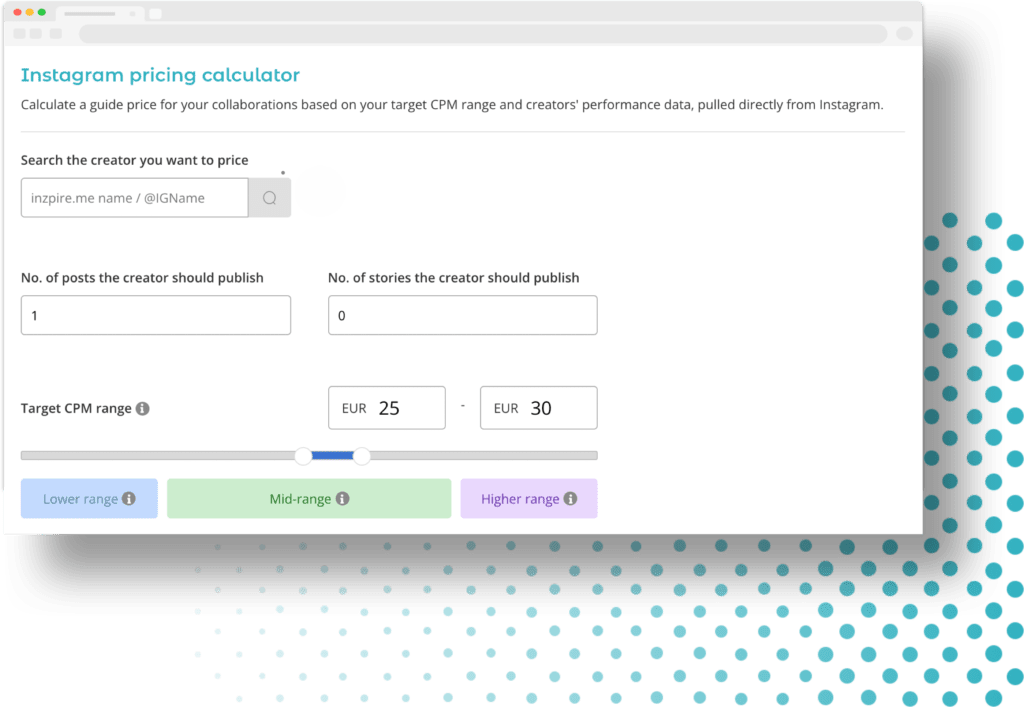
How to use the Pricing Calculator
To start pricing an influencer, type in their inzpire.me profile name or Instagram handle in the search box.
Then, enter the number of posts and stories you want your influencer to deliver during your campaign.
Finally, set your target CPM range. It’s set as €25 – €30 by default. Use the information from the industry CPM table. It’ll help you find the target CPM range that’ll give you the most cost-effective prices to pay your influencer.
And that’s it!
The calculator looks up your influencer’s actual impressions data from Instagram. Then it returns a price in line with the target CPM range you’ve set.
Here’s how it looks in action:
You can see a walkthrough of pricing an influencer with the target CPM approach in the following example!
Example: Pricing an influencer with a target CPM approach
Consider the following scenario.
Suppose you’re launching a new hiking boots range in the UK. Let’s say the boots have a unique design. This makes it more comfortable, light-weight, and durable than any other hiking boots available today.
You want to promote the range by collaborating with influencers. You also want your influencers to collect a pair of your boots from a shop to feature in their content.
Where do you begin?
In this scenario, your product is footwear. So you’ll start with the target CPM range for Fashion & Clothing in the Industry CPM table: €14 – €37.
You then need to determine what attributes your influencers should have to reach your campaign goal.
In this case, your goal is consideration. You’ll want to work with influencers that are experienced hikers, or adventure seekers. They need to have an audience that’s primarily based in the UK. After all, your hiking boots are only available in the UK!
Your campaign also has a bit of complexity because the influencers need to collect the boots from a specific location.
Based on the factors above, you should adjust your target CPM range to be somewhere in the middle of €14 – €37. In this case, the target CPM you might consider using is €20 – €30.
It’s important to leave room for negotiation when you’re adjusting your target range and setting your final price.
You might also want to work with a few talent agency influencers for their influence. Talent agency influencers are priced near the high end of the starting range. So you might consider using €30 – €37 as your target CPM range.
On the inzpire.me platform, you can also check if an influencer has set their own pricing information. If they have, you should compare their price to the price you calculated. If their price falls within, or is lower than your price range, consider meeting their price.
And if their price is higher than the price you calculated?
Ask yourself: do you believe in the influencer’s ability to help you reach your goal? If so, consider making small concessions. Remember, influencer marketing is about building relationships, so be sure to communicate openly with the influencer!
Final thoughts 💭
There you have it!
When pricing influencers, remember to use a target CPM approach to ensure that you price influencers consistently and accurately. It’ll also make it easier to justify costs to budget holders, teams, and clients.
You shouldn’t be afraid when you see CPMs that are higher than you’re used to. Remember that you get a lot more from influencer marketing:
Distribution and media costs are included in influencer marketing CPM.
You get added value for content, such as the benefits of credibility and product placement in organic content.
And with a clear pricing strategy, you can now feel confident pricing influencers for your campaigns!
Use inzpire.me’s platform to save time and manage your influencer marketing campaigns end-to-end.
Try it for yourself by signing up to inzpire.me.
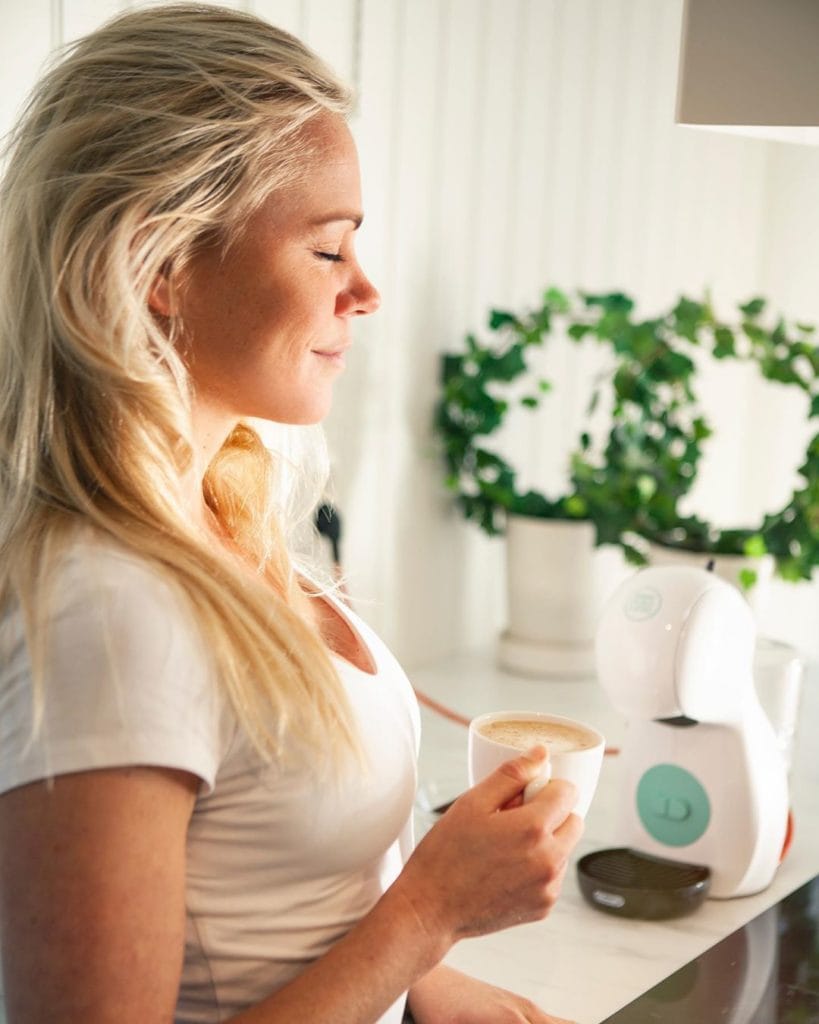
Influencer Conversion Guide
Learn how to create influencer marketing campaigns that convince people to buy.

Campaign Spend Calculator
Find out the budget you’d need to hit your goals with influencer marketing.

Instagram Benchmarks Report
Learn what engagement rates, reach, and impressions to expect for Instagram posts and stories.
